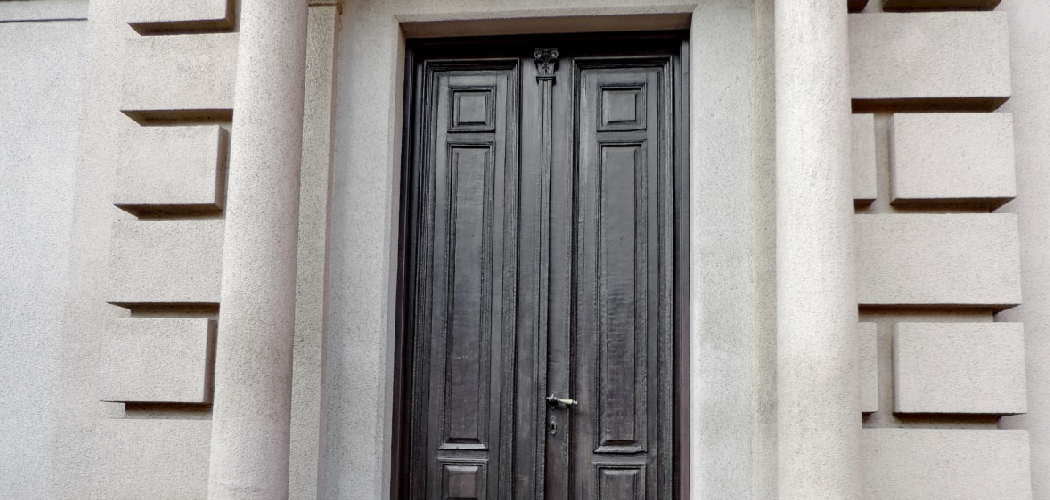Covering a doorway without a door can be both a practical and decorative solution for many homes. Whether you’re looking to save space, add a unique design element, or simply want a temporary or more flexible partition between rooms, there are a variety of creative methods available.
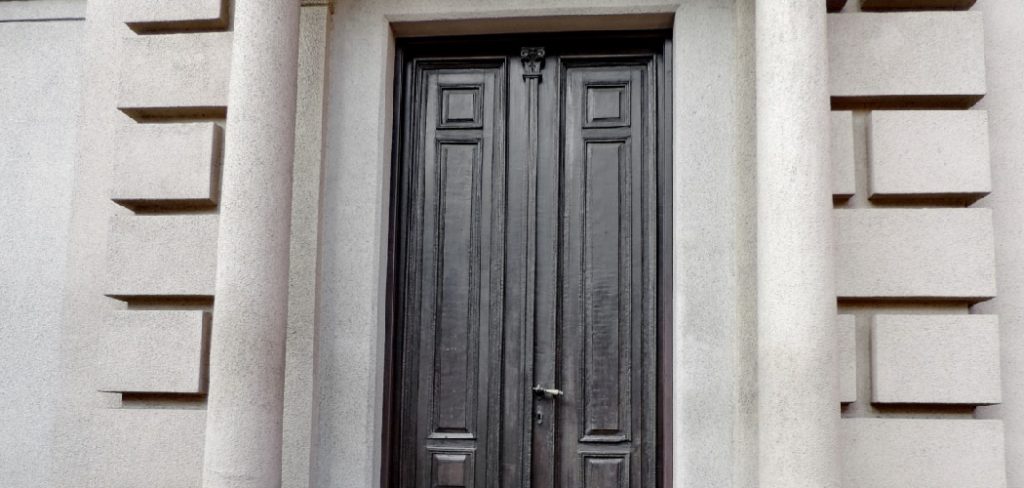
This guide on how to cover a doorway without door will walk you through several options, ranging from curtains and beads to sliding panels and room dividers, helping you choose the best approach for your needs and style.
Why Cover a Doorway Without a Door?
Before diving into the different methods of covering a doorway without a door, it’s important to consider why you might want to do so in the first place. Here are some potential reasons:
Space-saving:
Doors can take up valuable space, especially in smaller rooms or homes. By removing the need for a swinging door, you can create more room and improve the flow of your space.
Unique Design:
A doorway without a traditional door can add an interesting and unexpected element to your home’s design. It allows for more creativity and customization, as there are endless possibilities for materials, colors, patterns, and styles.
Temporary or Flexible Partition:
If you have an open floor plan or frequently entertain guests, covering a doorway without a door can provide a temporary or more flexible partition between rooms. This allows for easier movement and better use of space, as it can be opened or closed as needed.
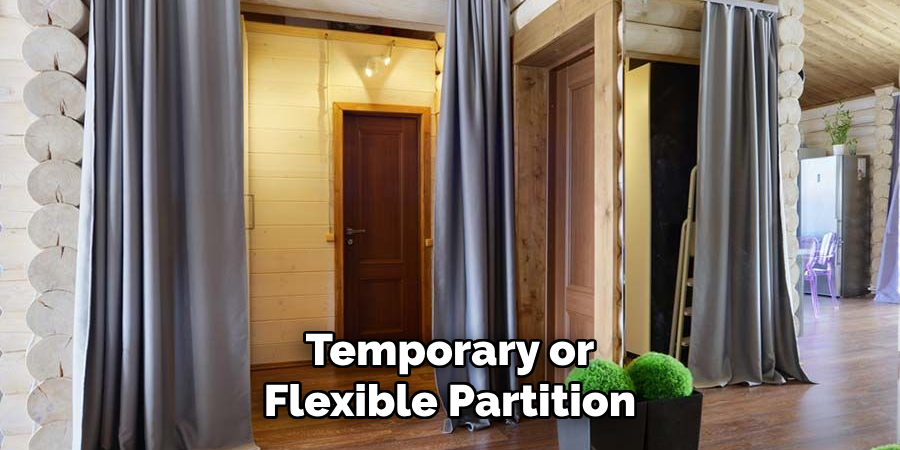
8 Methods on How to Cover a Doorway Without Door
Method 1: Curtains
Curtains are one of the most popular and versatile ways to cover a doorway without a door. They are easy to install, affordable, and come in an endless variety of fabrics, colors, and patterns, making it simple to find a style that complements your decor. To use curtains as a doorway covering, you will need a tension rod or a curtain rod installed above the doorway.
Choose a fabric that suits your needs—light and airy for a more open feel or thick and opaque for privacy and sound dampening. Curtains can be easily pulled aside when you want to open up the space, providing flexibility and convenience while enhancing the aesthetic appeal of your home.

Method 2: Beads
For a more unique and playful option, consider using beads to cover a doorway without a door. Beaded curtains have been around for centuries and are still popular today due to their versatility and charm.
They come in various styles, from simple strands of beads to intricate patterns and designs, making it easy to find one that matches your personal style. Installation is relatively simple—just hang the beaded curtain on hooks or tension rods above the doorway—and they can easily be pushed aside when you want an open space.
Method 3: Sliding Panels
Sliding panels offer both functionality and style. These panels typically consist of several large fabric or wood panels mounted on a track above the doorway. They can easily be moved back and forth to open or close off the space, making them a convenient option for room dividers or temporary partitions.
Sliding panels come in various materials, colors, patterns, and textures, allowing you to customize the look of your doorway covering to fit your home’s decor.
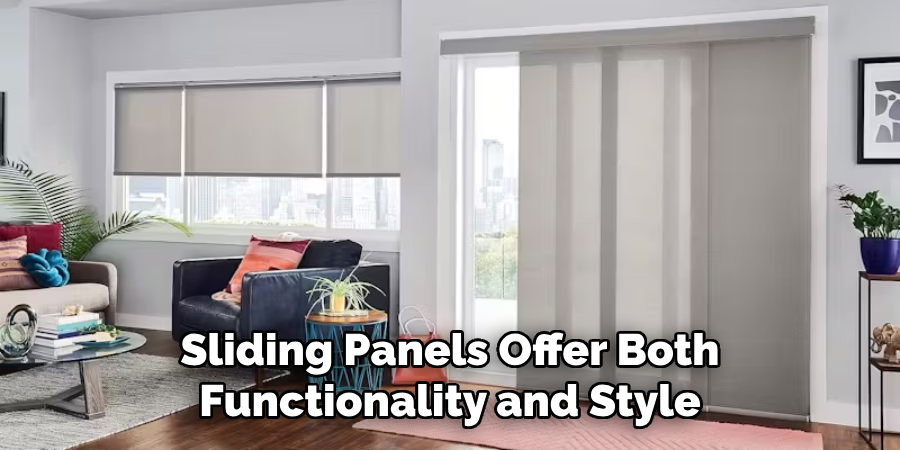
Method 4: Room Dividers
Similar to sliding panels, room dividers are another practical way to cover a doorway without a door. These larger structures consist of several connected panels that can be folded or moved into different positions as needed.
Room dividers are available in many styles and materials, from traditional folding screens to modern geometric designs, adding a unique touch to your space while also providing privacy and flexibility.
Method 5: Barn Doors
Barn doors are a popular design trend that can also be used to cover a doorway without a traditional door. These sliding doors add rustic charm and character to any home while also saving space by eliminating the need for a swinging door.
Barn doors come in various sizes, styles, and finishes, making it easy to find one that fits your doorway’s dimensions and complements your decor.
Method 6: Bookcases or Shelves
For a more unconventional approach, consider using a bookcase or shelves as a doorway covering. This method not only adds visual interest but also provides additional storage and display space.
Install a bookcase or shelving unit on the side of the doorway, leaving enough space for you to walk through. This option works best for wider doorways and can be customized with different styles and configurations to fit your specific needs.
Method 7: Hanging Plants
If you want to add a natural touch to your doorway covering, consider using hanging plants. Not only do they bring some greenery into your home, but they also act as a unique and functional partition between rooms.
Choose plants that thrive in low light if your doorway doesn’t get much sun exposure, and make sure to water them regularly to keep them healthy and vibrant.
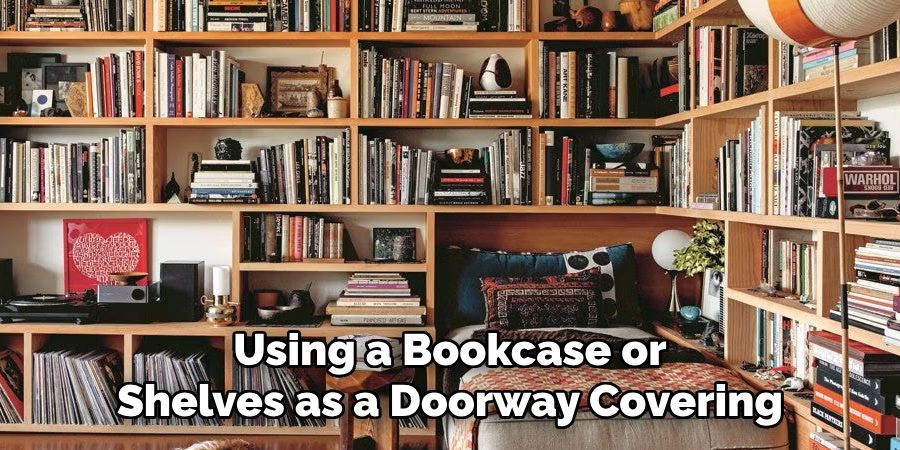
Method 8: Tapestry or Wall Hanging
For a bohemian or eclectic look, consider using a tapestry or wall hanging as a doorway covering. These large pieces of fabric can be hung on hooks or tension rods above the doorway and add a vibrant and textured touch to your space.
Choose a tapestry with colors and patterns that complement your decor, and don’t be afraid to mix and match different styles for an even more unique effect.
Following these methods on how to cover a doorway without door, you can cover a doorway without a door in a way that best suits your needs and personal style. Consider the purpose of the doorway, your home’s design aesthetic, and the level of privacy or flexibility you desire before choosing the best method for you. With some creativity and experimentation, you can create a functional and visually appealing doorway covering that adds character to your home.
Additional Tips
- When choosing a doorway covering method, consider the size and location of the doorway. Some options may work better for larger or smaller doorways, and some may be more suitable for high-traffic areas.
- Experiment with different materials, patterns, and colors to create a unique look that complements your home’s decor.
- Don’t be afraid to mix and match methods or combine multiple methods to achieve the desired effect.
- Consider practical factors such as ease of installation, maintenance, and functionality when choosing a doorway covering option.
- Keep in mind any potential safety hazards, especially if you have children or pets in the house.
- Regularly clean and maintain your doorway covering to keep it looking fresh and functioning properly.
- Have fun with your doorway covering and make it a reflection of your personal style and taste. Overall, the key is to find a solution that not only serves its purpose but also adds character and charm to your home. Happy decorating!
Remember, the possibilities for covering a doorway without a door are endless. Get creative and have fun trying out different methods until you find the perfect one for your space. Enjoy the process and the unique touch it will bring to your home. So, go ahead and give your doorless doorway the attention it deserves with these creative and functional methods.
Frequently Asked Questions
Q: Can I Cover a Doorway Without a Door for Privacy?
A: Yes, there are many options for covering a doorway without a door that can provide privacy. Curtains, sliding panels, room dividers, and bookcases are all great options for creating a temporary or flexible partition between rooms.
Q: How Can I Cover a Doorway Without a Door to Save Space?
A: Using sliding panels, barn doors, bookcases or shelves as doorway coverings can help save space by eliminating the need for a traditional swinging door. These options also provide added functionality as they can be moved or used for storage purposes.
Q: What Are Some Unique Ways to Cover a Doorway Without a Door?
A: Beads, hanging plants, tapestries or wall hangings are some unique ways to cover a doorway without a door. These options add an interesting and personal touch to your space while also serving as functional doorway coverings. So, you can get creative and choose a method that best suits your style and needs.
Q: Is it Possible to Cover a Doorway Without a Door Permanently?
A: Yes, there are permanent solutions for covering a doorway without a door, such as installing sliding barn doors or building a bookcase or shelving unit around the doorway. These options may require more time and effort but can create a more cohesive and seamless look in your space. It is important to carefully consider your needs and desired level of permanence before choosing an option for covering your doorway without a door permanently.
Conclusion
Covering a doorway without a door provides practicality, creativity, and flexibility in your home’s design. Whether you choose curtains, beads, sliding panels, or any of the other methods mentioned above, there are endless possibilities to suit your needs and personal style.
Experiment with different options and have fun creating a unique and functional doorway covering for your home. So, try out these methods on how to cover a doorway without door to cover the doorway without a door and give your home a new look! Happy decorating!

